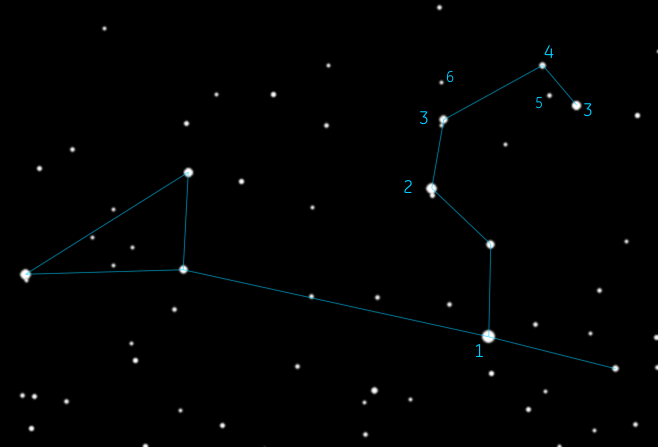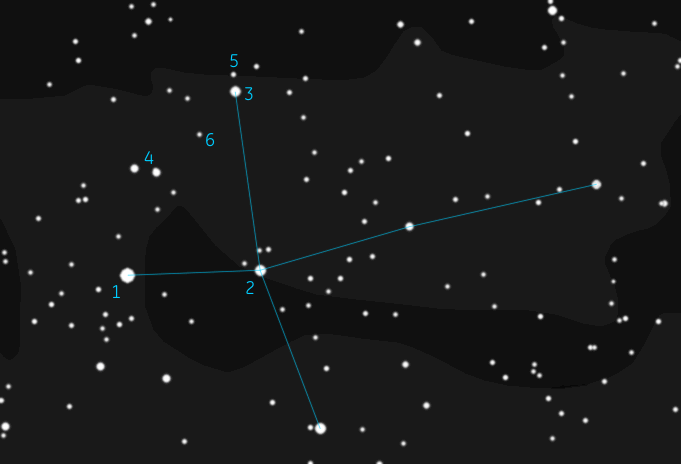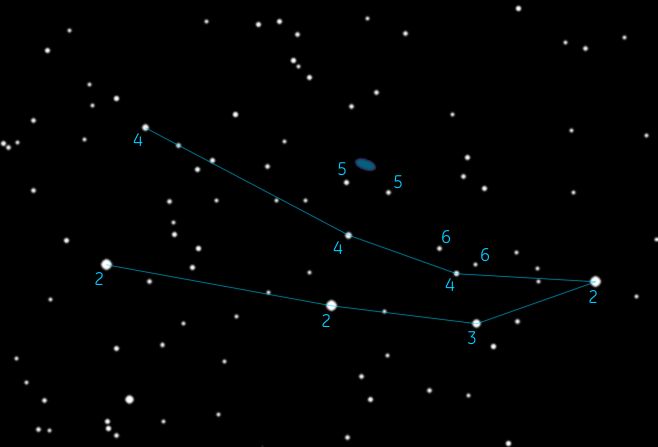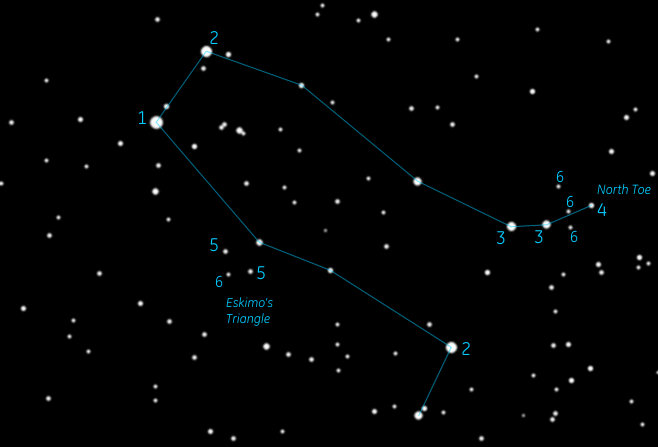Stargazing
Judging the Sky by Eye
The Method
I present here five Gauge Constellations that you can use to determine how clear the night sky is. The clearer the sky, the fainter the magnitudes you can see.
- The Little Dipper, which is always visible, but sits a little low in the sky. The best visibility is straight up, which is why I give you the other four constellations -
- Leo the Lion, for the Spring
- Cygnus the Swan, for the Summer
- Andromeda (the Princess), for the Fall, and
- Gemini the Twins, for the Winter
Of course, that means learning not only each of these constellations, but also learning which stars are which magnitude. Actually, though, I've found it's really not all that hard -- it's only one new constellation per season.
You can learn more about these constellations, and how to find them, by going to the Stargazing section.
The Gauge Constellations
All Year: The Little Dipper

The cup of the Little Dipper provides an excellent gauge of the sky. The North Star, at the tip of the handle, is magnitude 2, as is the next brightest star at the tip of the cup β Ursa Minoris) -- also magnitude 2. The other star at the end of the cup is magnitude 3. The star where the handle joins the cup is magnitude 4, and the other star at the back of the cup is magnitude 5. You can only see the magnitude 5 when the sky is very clear and very dark. Exactly half-way between the magnitude 4 and 5 is a magnitude 6, at the limit of what most people can see. You may need to use "averted vision" to see it -- look at the first star of the handle and, as you look away from the cup, you can see the faint magnitude 6 star at the back of the cup, the sign of an exceptionally clear and dark sky. The Little Dipper test works best in the summer when the Little Dipper is highest in the sky.
Spring: Leo the Lion

You can use the Sickle of Leo the Lion to gauge your sky. Starting with 1st magnitude Regulus we skip a star and come to 2nd magnitude γ (gamma) Leonis, then as we go up, the back of Leo's head and his nose are both 3rd magnitude stars, and his topknot is 4th magnitude. His eye, half-way between the nose & topknot, is 5th magnitude and if you can see it, indicates you have an excellent sky. His ear is an itty-bitty 6th magnitude star which, if you can see it, tells you that your sky is the best you're going to get.
Summer: Cygnus the Swan

You can use Cygnus (the Northern Cross) as a gauge of the sky also. Use the western wing of Cygnus, starting with Deneb as a magnitude 1, and going around counterclockwise to the body star at magnitude 2, the wingtip at magnitude 3, and a pair of stars on the back edge of the wing at magnitude 4. Just off the wingtip is a magnitude 5 star - if you can see it, you have an excellent clear, dark sky. Half-way between the wingtip and the pair of magnitude 4's is a magnitude 6, which you can only see under the very best conditions.
Fall: Andromeda (the Princess)

You can use Andromeda to gauge how good your sky is. Starting with Andromeda's head at a magnitude 2, the brighter curved line is all magnitude 2 stars except the dimmer one right after her head -- that one is magnitude 3. The other curved line is all magnitude 4 stars. The two stars that stradle the Andromeda galaxy are magnitude 5. If you can see those two stars you have a really good clear, dark sky, and a good chance of seeing the galaxy with the naked eye (you may need to use averted vision to see it). The second pair of stars from Andromeda's head points to these two 5th magnitude stars. The first pair of stars points to a similar (and closer) pair of magnitude 6 stars, visible only under the very best of conditions.
Winter: Gemini the Twins

You can use Gemini to gauge how good your sky is. Starting with 1st magnitude Pollux and a very bright 2nd magnitude Castor, we jump to the foot of Pollux (the twin) which is 2nd magnitude and the foot of Castor which is made of two 3rd magnitude stars and a 4th magnitude toe. Then the faint triangle next to δ Geminorum, very useful stars for finding the Eskimo Nebula, is made up of two 5th magnitude stars and a 6th magnitude star, all of which can only be seen if you have a crystal clear, perfectly dark sky. You can also use a line of 6th magnitude stars that passes through Castor's foot (handy for helping to find M35 in binoculars) as a test as well -- if you can see them without the binoculars it's the best of skies.
 Return to Stargazing Home Page
Return to Stargazing Home Page
Questions
Your questions and comments regarding the Stargazing section are welcome.
You can e-mail the author, Randy Culp for inquiries,
suggestions, new ideas or just to chat.
Updated 18 July 2023
